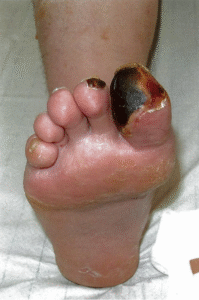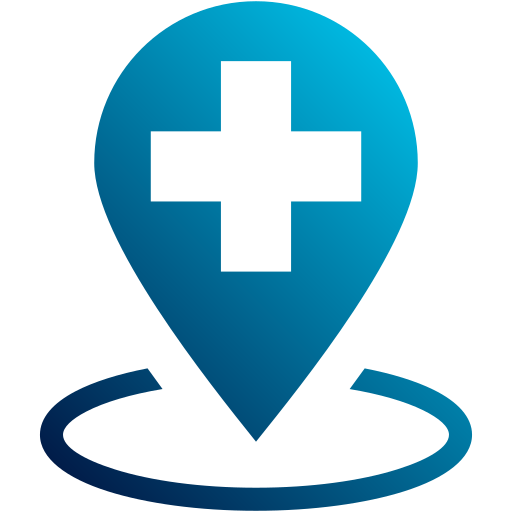What is PAD?
Peripheral Arterial Disease (PAD) occurs when plaque builds up inside the arteries of the legs, leading to narrowing or blockages that reduce blood flow. It’s essentially atherosclerosis—or “hardening of the arteries”—affecting the peripheral circulation, especially the legs.
This restricted blood flow can result in:
- Claudication: cramping or pain in the calves, thighs, or buttocks with walking
- Rest pain: burning or aching in the feet, especially at night
- Non-healing wounds or ulcers on the feet or toes
- Tissue death (gangrene) in severe, untreated cases
At Vascular Clinic, we help patients understand PAD in clear terms it’s like a clogged pipe cutting off circulation to your muscles and skin. We educate you about risk factors such as smoking, diabetes, high cholesterol, and high blood pressure, and how managing these can slow disease progression.

Our Mission: Limb Salvage
- Detailed clinical exam to assess pulses and symptoms
- Ankle-Brachial Index (ABI) to compare leg and arm blood pressure
- Vascular ultrasound to identify blockages
- CT angiography to map arterial anatomy
- Invasive angiography (in select cases) to visualize and treat in one setting
Conservative Management for Milder PAD
If you have intermittent claudication that’s manageable, we often start with:
Structured walking therapy (supervised or home-based) to build endurance.
Medication optimization:
- Lifestyle-limiting claudication (unable to walk without pain)
- Rest pain or foot ulcers (critical limb ischemia)
- Progressive tissue loss or non-healing wounds
We closely monitor your progress with serial clinic visits and non-invasive testing.
Treatment and Symptoms Infographics



When Intervention Is Needed
- Lifestyle-limiting claudication (unable to walk without pain)
- Rest pain or foot ulcers (critical limb ischemia)
- Progressive tissue loss or non-healing wounds
Endovascular (Minimally Invasive) Procedures
- Balloon angioplasty: inflates to push plaque aside
- Stent placement: keeps the artery open with a metal scaffold
- Atherectomy: shaves or removes plaque from inside the artery
These procedures:
- Are performed under local anesthesia and light sedation
- Require no large incisions
- Are typically outpatient procedures
- Allow return to normal activities within a few days
- Promote ulcer healing and walking improvement without major surgery

Surgical Bypass for Complex PAD
- Using a graft or your own vein to route blood around the blockage
- Performed under general anesthesia in a hospital
- Requires a few days of recovery, but provides durable results
What to Expect
- Detailed vascular imaging
- Discussion of findings during your clinic visit
- Explanation of risks and benefits of all options
- Local anesthesia and mild sedation for endovascular cases
- General anesthesia if bypass surgery is needed
- Full wound care support if you have ulcers
- Continued monitoring with ultrasound and clinic visits
- Risk factor management to prevent recurrence
Frequently Asked Questions
Will my leg pain go away after the procedure?
In most cases, yes. Many patients can walk longer distances and heal foot wounds after successful revascularization.
Is surgery always necessary for PAD?
No. Most patients benefit from minimally invasive interventions, and we reserve surgery for complex or advanced disease.
Can PAD be cured?
While the underlying atherosclerosis can’t be reversed, we can restore blood flow and dramatically improve symptoms and quality of life.
Will I need lifelong follow-up?
Yes. PAD is a chronic condition, and regular monitoring helps catch recurrences early and maintain long-term success.
Why Choose Vascular Clinic?
- Board-Certified Experts in Limb Salvage and Revascularization
- Comprehensive PAD Diagnosis and Treatment Onsite
- Minimally Invasive First Approach
- Access to Advanced Tools for Complex Disease
- Coordinated Care with Wound Care and Podiatry Teams
We don’t just treat blockages—we restore hope and mobility. Whether you’re struggling to walk or facing a non-healing ulcer, you’ll receive personalized care and expert treatment every step of the way.




